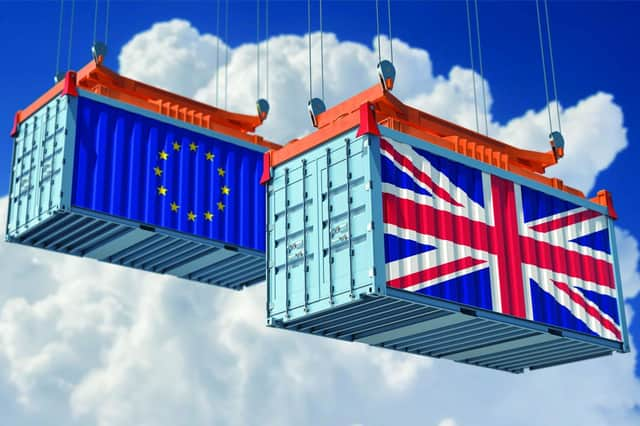Steering clear of double duty charges on imports – all you need to know from AAB Accountants


Customs duty is now potentially due on all imported goods, and traders should think about how they can mitigate this risk.
The loss of preferential treatment between the UK and EU can create a double duty impact within the supply chain and create additional tax liabilities when trading internationally.
Goods imported into the UK for distribution to customers in the EU may be liable to customs duty on two occasions – on entry to the UK, and then onward supply and entry into the EU. This is known as double duty. The same situation would occur if goods were imported to the EU for onward distribution to UK customers.


The Trade and Cooperation Agreement (TCA) between the UK and EU sets out the criteria to determine what are “originating goods”. If goods qualify under the rules or origin in either customs territory, they gain preferential status and relief from customs duty would be allowed.
But when they are imported into free circulation, goods lose their preferential status and any onward supply is subject to customs duty.
Customs duty contributes to the “landed cost” of the goods. This is the price of the goods paid to the supplier including all other additional costs covered under the agreed terms of trade. This landed cost price would then be subject to customs duty based on the percentage applied by the commodity code.
For example, a UK company imports glassware which it buys for £100 from a Chinese supplier. When the glassware is imported into the UK, the customs duty would be charged at 10 per cent adding £10 to the cost of the goods. This £10 is the first duty charge.
The company anticipates that shipping and insurance will add a further £5 on bringing the glass into the UK. The landed cost is therefore £115. The glassware is then sold to a French customer for £150, generating an expected profit margin of £35.
However, because the glassware does not have preferential status under the TCA, additional duty at a rate of 11 per cent is charged on entry into France.
This second, or double duty, charge adds a further 11 per cent, or £12.65, to the landed cost. As the landed cost of the glassware in France is now £127.65, the company’s profit margin has been reduced from £35 to £22.35 – a 36 per cent reduction.
A similar double duty charge applies to goods imported into the UK from one EU country for re-export to another EU country.
In this case, the first duty charge is nil as the goods have preferential status under the TCA. However, when the goods are subsequently re-exported to the EU, the goods do not qualify for preferential treatment and the second duty charge is at the third country rate in the EU.
AAB’s customs duty specialists support businesses in exploring the options available to mitigate this double duty impact on their operations.
A business’ duty mitigation plan may consider potential changes to the supply chain, as well as focussing on areas such as tariff classification, rules of origin, use of free trade agreements, and customs special procedures.
Customs special procedures are a key duty mitigation tool. “Inward Processing”, for instance, can be used for manufacturing goods. This allows importers to suspend duty on components that will be processed or repaired and are destined to be re-exported outside of the UK.
Another example is “Customs Warehousing”, which can be used for any finished goods. This allows importers to suspend duty on finished goods that are destined to be re-exported outside of the UK.
Using these procedures allows the goods to retain their originating status, as they are held in a duty suspended state and the tax point is delayed until the goods leave this procedure.
With proper planning and strategic alignment, a business can reduce its duty exposure and improve its profit margins. At AAB, our team of customs experts, who are drawn from industry, accounting and HMRC – specialises in finding solutions to international trade problems such as the imposition of double duties. We have been instrumental in saving our clients millions of pounds in customs duty on products ranging from textiles to high technology. We are experts in the creation, delivery, and management of duty mitigation programs suitable for businesses of any size.
If you would like to find out more about our approach to duty mitigation, please get in touch with Jon Hicks, customs director at AAB.